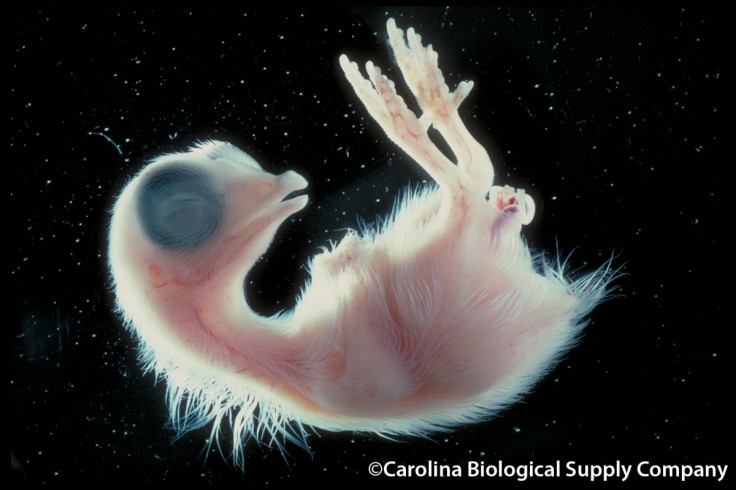Dinosaur legs grown on chickens in reverse evolution experiment

Dinosaur-like legs have been grown on chickens in a 'reverse evolution' experiment. Researchers say the results will not pave the way for a Jurassic Park scenario, but instead shed light on how birds evolved from dinosaurs millions of years ago.
Scientists from the University of Chile managed to grow the legs by inhibiting a malnutrition gene involved in the development of the bone. The team was building on previous work where they managed to undo the evolution of the perching toe of birds to create a non-twisted, non-opposed toe, as dinosaurs would have had.
In the latest study, published in the journal Evolution, researchers were looking at the fibula bone. In dinosaurs, this bone is tube-shaped and goes all the way down to the ankle. In birds, however, it does not connect to the ankle, having evolved to become shorter than the tibia.
Study author Joâo Botelho was looking at the way in which bird embryos first develop a dinosaur-like fibula, which then becomes shorter as it develops into an adult. He looked at the mechanisms behind this. In bone development, the shaft matures first and the ends continue to grow. In birds, he found molecular mechanisms of malnutrition that caused the lower end of the fibula to stop growing.

When he and the team inhibited a malnutrition gene known as Indian Hedgehog, the chickens grew tubular fibula as long as the tibia, which connected to the ankle in the same way dinosaur leg bones do. Researchers believe this malnutrition occurs because of a bone in the ankle – the calcaneum – which presses against the lower end of the fibula in bird embryos. In the 'dinosaur' chicken legs, the calcaneum was attached to the fibula.
Researchers also found the tibia of the dinosaur-like legs was much shorter than what is seen in a normal chicken leg, indicating that the fibula connecting to the ankle stops the tibia from outgrowing its neighbouring bone.
These findings fit with the evolution of bird legs. The earliest birds from the early Cretaceous period had fibulae that did not connect to the ankle, but that were almost as long as the tibia.
The findings, researchers said, pave the way for further research into the relationship between birds and dinosaurs. Alexander Vargas, whose laboratory the experiment was carried out at, said: ""The experiments are focused on single traits to test specific hypotheses. Not only do we know a great deal about bird development, but also about the dinosaur-bird transition, which is well-documented by the fossil record. This leads naturally to hypotheses on the evolution of development, that can be explored in the lab."
© Copyright IBTimes 2025. All rights reserved.






















